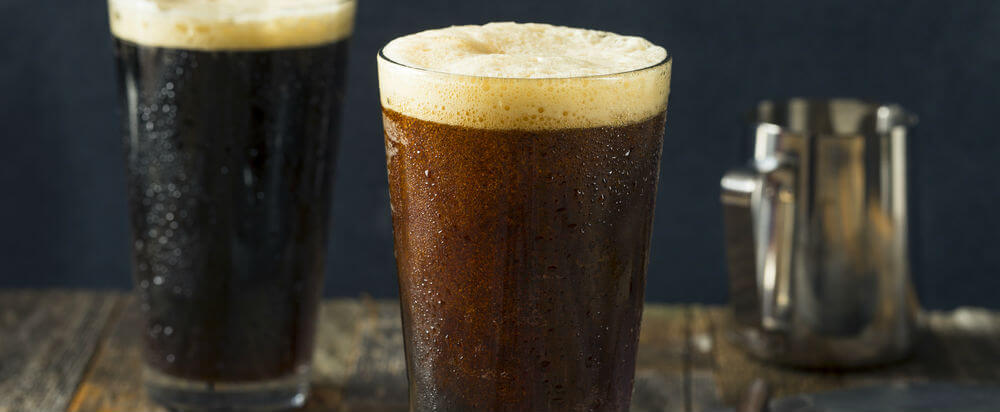How to Nitrogenate Beer
December 18, 2018
You hear a great deal about nitrogenated beers or “nitro” beers today. Producers from brewpubs to craft brewers to large beer brewers are interested in offering nitrogen infused beer. What are the advantages of using nitrogen beer gas rather than carbon dioxide to put effervescence into beer?
What Is Nitro Beer?
In a way, nitrogenation of beer was in use long before nitrogen was even recognized as an element. Traditional English ales – stouts, porters, milds, and bitters – were developed long before refrigeration and forced carbonation. Wooden casks could not hold much CO2 pressure from fermentation, so they are naturally very low in carbonation. The ale casks were stored in cellar temperatures of about 55 F.
Adding carbonation to the beer made the ales richer and creamier, with an attractive head. Pubs began to use “beer engines”, hand pumps that could pressurize the casks in the cellar to about 30 psi with air and deliver the beer to taps at the bar. Since air is 78% nitrogen, this was mostly a “nitrogenation” process. The hand pumping ensured that most barmen and barmaids had well-developed arm muscles!
The problem is that the remaining 21% of air is oxygen. Unless the cask is consumed in about a day, it will begin to oxidize the beer and spoil the flavor. Pubs now use a 75%-25% blend of nitrogen and CO2 to pump low-carbonation ales.
While the first beers using nitro beer gas were mostly dark ales, an increasing number of brewers have been experimenting with other beers and ales to achieve a pleasing head and improved mouth-feel.
Nitrogen Vs. CO2 Beer

Developments in nitrogenation technology have made it feasible for every producer of beer from home brewers to large breweries to take advantage of nitrogenation to produce tastier and more visually appealing beers.
Either nitrogen or carbon dioxide can be used to provide effervescence to beer, but the two substances are very different in how they react with beer under pressure. Carbon dioxide is highly soluble in water-based liquids whereas nitrogen has a much lower solubility. Thus, a keg or bottle pressurized with carbon dioxide will have much more CO2 dissolved in the beer compared to gas dissolved in a nitrogen-pressured keg or bottle.
When nitrogenated beer is opened or tapped, the bubbles of nitrogen that come out of solution are much smaller than the bubbles of CO2 that form from a carbonated beer. This has some noticeable effects on the appearance and mouth-feel of the beer. The nitrogen bubbles produce a substantial and long-lasting head and create a smoother and creamier mouth-feel than CO2, especially in stouts and porters. The small bubbles in nitro beer fall downwards as the head forms because the small bubbles are more easily pushed around by currents in the beer, especially in a traditional pint glass.
How to Nitrogenate Beer
The nitrogenation process will vary somewhat depending on the volume of beer being produced. Nitro beer gas can be provided from gas cylinders or a nitrogen generator.
Small producers often use a pressure tank to infuse nitrogen into the beer. For stouts, a pressure of 7 psi above atmospheric will enable 40 parts per million of nitrogen to remain in solution, enough to give a good head and a creamy texture. Tanks rated for this low pressure are considerably less expensive than tanks with higher pressure ratings.

Tanks have some disadvantages in nitrogenation. For large volumes, you will need several stainless-steel vessels. Another problem is the low solubility of nitrogen. Filling a pressure vessel, infusing nitrogen, and transferring the beer to a keg may result in a loss of dissolved nitrogen, reducing the head and mouth-feel effects. In-line injectors will infuse the beer with nitrogen or a nitrogen/CO2 mixture as the beer enters the keg.
Nitro beer from a keg is best served from a dedicated tap that has a restrictor plate with small holes just before the faucet. This helps the nitrogen bubbles to break out and ensures a substantial head and a creamy texture.
Benefits of Using an Onsite Nitrogen Generator for Beer
There are significant advantages to using a beer nitrogen generator rather than nitrogen cylinders for nitro brewing.
Nitrogen cylinders are heavy, bulky, and difficult to handle. They require a secure storage area that is well-ventilated in case of an accidental cylinder release. You must arrange delivery of nitrogen cylinders and return empties.
Nitrogen generator manufacturers create systems that produce nitrogen gas for beer at lower cost and can sometimes pay for themselves in less than two years. Nitrogen systems for beer have small footprints, and some, such as the GENERON® wall-mount nitrogen generator system can easily be mounted on a wall. They can deliver up to 99.5% pure nitrogen at flow rates up to 15.1 scf/h and pressure up to 172 psi.
GENERON® Membrane Nitrogen Generators are typically 1/3 the size of those of competitors, using only 30% of the existing footprint and utilizing 45% less energy. They are highly reliable and require minimal maintenance. They can provide nitrogen at up to 99% purity in quantities from brewpub to brewery scale.
Contact our team at GENERON today to learn how we can lower your costs with our on-site nitrogen gas systems today!
